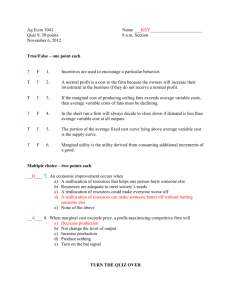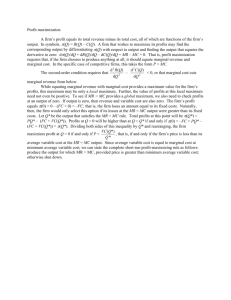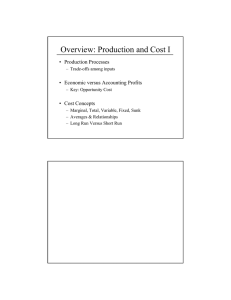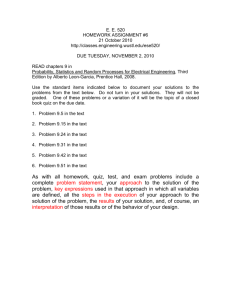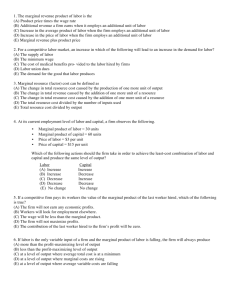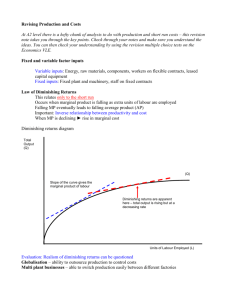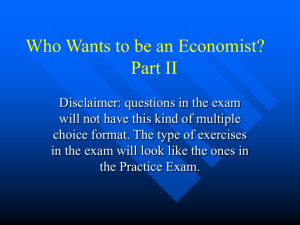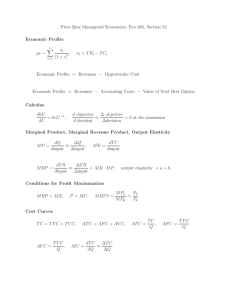BUSA 6160 Managerial Economics Short Answer Quiz 5 Due
advertisement
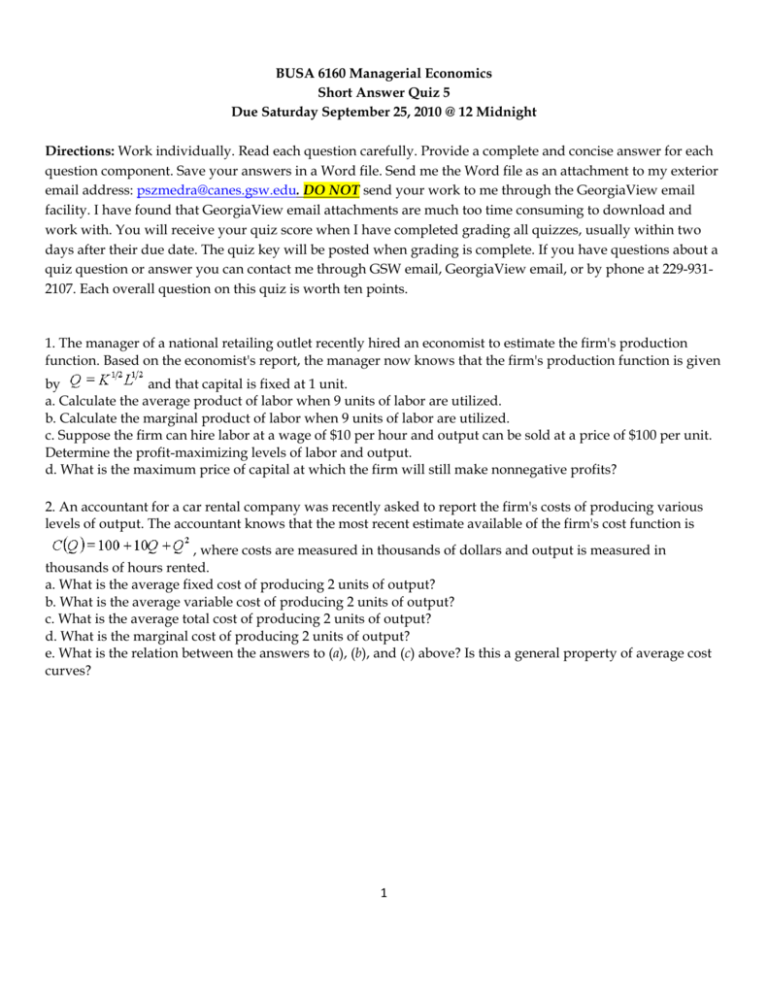
BUSA 6160 Managerial Economics Short Answer Quiz 5 Due Saturday September 25, 2010 @ 12 Midnight Directions: Work individually. Read each question carefully. Provide a complete and concise answer for each question component. Save your answers in a Word file. Send me the Word file as an attachment to my exterior email address: pszmedra@canes.gsw.edu. DO NOT send your work to me through the GeorgiaView email facility. I have found that GeorgiaView email attachments are much too time consuming to download and work with. You will receive your quiz score when I have completed grading all quizzes, usually within two days after their due date. The quiz key will be posted when grading is complete. If you have questions about a quiz question or answer you can contact me through GSW email, GeorgiaView email, or by phone at 229-9312107. Each overall question on this quiz is worth ten points. 1. The manager of a national retailing outlet recently hired an economist to estimate the firm's production function. Based on the economist's report, the manager now knows that the firm's production function is given by and that capital is fixed at 1 unit. a. Calculate the average product of labor when 9 units of labor are utilized. b. Calculate the marginal product of labor when 9 units of labor are utilized. c. Suppose the firm can hire labor at a wage of $10 per hour and output can be sold at a price of $100 per unit. Determine the profit-maximizing levels of labor and output. d. What is the maximum price of capital at which the firm will still make nonnegative profits? 2. An accountant for a car rental company was recently asked to report the firm's costs of producing various levels of output. The accountant knows that the most recent estimate available of the firm's cost function is , where costs are measured in thousands of dollars and output is measured in thousands of hours rented. a. What is the average fixed cost of producing 2 units of output? b. What is the average variable cost of producing 2 units of output? c. What is the average total cost of producing 2 units of output? d. What is the marginal cost of producing 2 units of output? e. What is the relation between the answers to (a), (b), and (c) above? Is this a general property of average cost curves? 1 3. The following table summarizes the short-run production function for your firm. Your product sells for $5 per unit, labor costs $5 per unit, and the rental price of capital is $20 per unit. Complete the following table, and then answer the following questions: a. Which inputs are fixed inputs? Which are the variable inputs? b. How much are your fixed costs? c. What is the variable cost of producing 20 units of output? d. How many units of the variable input should be used to maximize profits? e. What are your maximum profits? f. Over what range of variable input usage do increasing marginal returns exist? g. Over what range of variable input usage do decreasing marginal returns exist? h. Over what range of variable input usage do negative marginal returns exist? 4. The management of Morris Industries is considering a plan to terminate a new employee. The action stemmed from documented evidence supplied by the firm's accounting department that this new employee did not add as much to the firm's overall output as did a worker hired two weeks earlier. Based on this evidence, do you agree that the latest worker hired should be fired? Explain. 5. There are over 5,000 banks in the United States-more than 10 times the number per person than in other industrialized countries. A recent study suggests that the long-run average cost curve for an individual bank is relatively flat. If Congress took steps to consolidate banks, thereby reducing the total number to 2,500, what would you expect to happen to costs within the banking industry? Explain. 2


